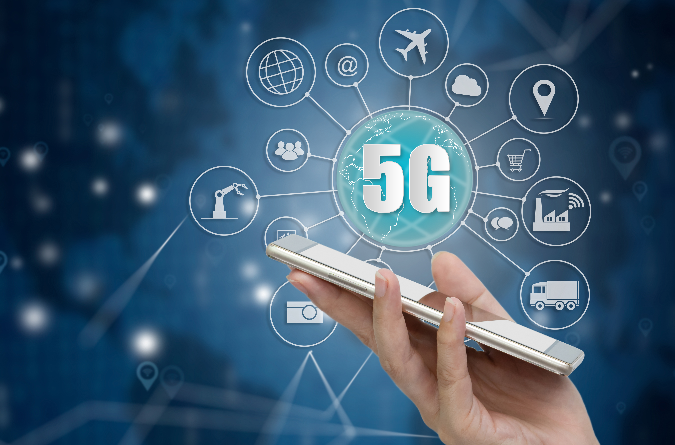LTE vs. 5G: What's the Difference?

LTE vs. 5G: What's the Difference?

The web technology industry is in a state of constant change. Every few years, a new generation of marketing jargon pops up promising faster speeds and better connections.
LTE and 5G are two such terms, the latter of which is familiar to most people because of their previous experience with 3G and 4G. Both LTE and 5G are now integral to the national connectivity fabric, with only a few UK areas yet to receive the latest generation of network technology.
However, given the widespread use of these terms in marketing, it's not always clear what they refer to, especially as LTE and 5G are sometimes deployed together. The terms LTE and the older 4G are also often used interchangeably, although they are different technologies.
What is the difference between 4G LTE and 5G?
LTE, or "Long Term Evolution," was originally a standard published by the International Telegraph Union Radiocommunication (ITU-R) regulator in late 2008. It was designed as a way to advance the nation's infrastructure, which had previously failed to develop fast enough to support speeds that could be called 4G.
In theory, 4G LTE can achieve data transfer speeds of up to 150Mbps for download content and 50Mbps for upload, although these figures vary based on various factors. Location, deployment and traffic affect speed at any given time. Typically, practical considerations mean that 4G LTE will likely hit download and upload speeds of 20Mbps and 10Mbps, respectively.
In this case, the latest generation of connectivity, 5G, theoretically offers download speeds of up to a staggering 10Gbps, though even the speeds recorded in the real world dwarf LTE's offerings. For example, when IT Pro was first tested on Vodafone's 5G network, the device was using registration speeds of between 100Mbps and 150Mbps.
These higher speeds are usually because 5G uses a different spectrum than 4G, the millimeter wave high band, which supports far more bandwidth than LTE uses. Therefore, more data can be transferred at one time.
While 5G can also use frequency bands below 6Ghz but above low-band frequencies, these certainly don't support the highest possible speeds. However, these lower speeds will still far exceed anything 4G LTE offers, and deploying "sub-6" connections could even expand 5G's coverage, since walls and surfaces tend to block millimeter-wave frequencies.
In short, because 5G uses a different spectrum than 4G LTE, it can offer stronger, faster connections, higher traffic capacity, and latency as low as 1 millisecond.
However, 5G deployment is still in its early stages. Coverage is still fairly limited, and there's still more work to be done before networks like EE, Three and Vodafone can start delivering the upper tiers of 5G's promise.
Should I choose LTE or 5G?
The answer to that question really depends on your budget, location, and whether you're using the connection for personal or business needs, though 5G speeds might make you wonder why we're comparing the two.
As more and more countries expand their 5G infrastructure, we're seeing more 5G-friendly hardware options appear on the market. You need to find out what products are available in your country and whether the devices fit your needs and price.
Increased competition and the use of 5G as a market differentiator has driven down smartphone prices, and if you buy a high-end smartphone today, it will likely support 5G. However, 5G is still far from ubiquitous, and LTE plans are still more attractive, especially if you don't need 5G's blazing speeds.
That said, if you're a business that relies heavily on connected sensors and IoT-like networks, the bandwidth and low latency of 5G cannot be ignored. 5G has been touted as a communications technology that will allow driverless cars to navigate with ease and enable businesses to deploy large networks of smart sensors and devices in ever-innovating ways. In this sense, an upgrade is a must.
In fact, the best solution may be to combine LTE and 5G to create more advanced features. Such is the case with EE, which in April 2022 became the first European network to successfully deliver 5G across seven LTE and 5G spectrum carriers. Implemented using a mobile test device equipped with the Qualcomm Snapdragon 8 Gen 1 mobile platform, the network aggregation includes five bands of LTE spectrum, including two 1.8GHz carriers, two 2.6GHz carriers and one 2.1GHz, and two 3.4GHz and 3.6GHz carriers. 5G New Radio (5G NR) frequency bands. The latter channel, part of the main 5G frequency band, was acquired by EE via Ofcom's spectrum auction in early 2021 for an estimated £450m.
Commenting on EE's announcement, Qualcomm Business Development Director Vikrant Jain stated that "aggregating seven (5LTE + 2NR) different spectrum bands for 5G is a major achievement and will provide an enhanced customer experience" and will be used to provide EE Fastest 5G speeds to date - 2.2Gbps in lab tests, real-world estimates of over 1.7Gbps. EE said on April 22 that the technology is expected to appear in major UK cities by 2022 and will be supported by the next generation of smartphones.
However, integrating 5G with 4G/LTE also presents many challenges. On the client side, requirements include seamless handover between 5G and 4G/LTE as people roam between coverage areas, although 5G's core network is very different from 4G/LTE.
As Mark Newman, principal analyst for research and media at TM Forum, told IT Pro in February 2022: “The 5G services available today operate by connecting the new 5G radio access network to the old LTE/4G core network .The core of 5G is complex because it is based on the principle of cloud computing, and operators want to launch advanced new services based on the new cloud architecture."
5G Health Issues
Mobile phones have long sparked health concerns, but arguably not many networks have the bad name 5G has.
In October 2019, Brighton and Hove City Council joined Glastonbury, Frome and Totnes in banning the installation of new 5G masts. Opposition to 5G is not unique to the UK, but is part of a larger trend of mistrust and misinformation. Two years ago, 180 scientists from 36 countries publicly called on the European Union to suspend the expansion of 5G until its impact on human health was more fully investigated.
So, what's so bad about 5G?
Both 4G and 5G use "radio waves," but the main difference is that 5G uses a higher frequency than 4G. Higher frequency airwaves provide better network capacity and speed. However, studies of 5G-related health risks have not identified any specific, real dangers from 5G.
The future of LTE and 5G
5G's potential to enhance existing technologies and lead to more innovative connected systems and potentially society-changing machines such as self-driving cars will only grow.
Still, despite the release of 5G smartphones from Apple to Xiaomi, it may be a while before the fifth generation of mobile connectivity fully replaces its predecessors.
Ericsson's latest research shows that 4G LTE remains the dominant cellular network technology in most parts of the world, accounting for 78% of mobile subscriptions in Western Europe, 80% in the Gulf countries, 83% in Northeast Asia and 89% in North America. While the rollout of 5G is going well, that doesn't mean everyone will automatically jump on the bandwagon anytime soon. Five years later, in 2026, 4G LTE is expected to remain the dominant technology in Central and Eastern Europe, accounting for 65% of mobile subscriptions. That's almost double the 33 percent projected for 5G subscriptions that year. 4G LTE is expected to remain the dominant cellular network in India (66%), Southeast Asia and Oceania (57%), and the Middle East and North Africa (51%).
The regions where 5G is expected to replace 4G LTE by 2026 are Western Europe (where 69% of mobile subscriptions will be 5G), Northeast Asia (65%), North America (84%) and GCC countries (73%). Over the next five years, the number of 4G LTE mobile subscriptions in these regions is expected to drop to 27%, 33%, 16% and 22% respectively.
Ericsson's findings suggest that the rollout of 5G does not automatically mean the decline of 4G LTE. In fact, its availability is expected to grow, expanding its global population coverage from 80% in 2020 to 95% in 2026. In contrast, 5G covers only about 15% of the global population in 2020 and will expand to 60% in the next five years.
5G is undoubtedly the future of telecommunications -- at least until 6G arrives. However, for most people, now may not be the time to ditch 4G entirely.